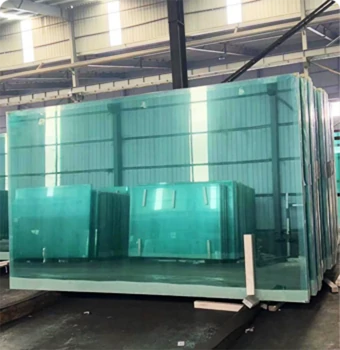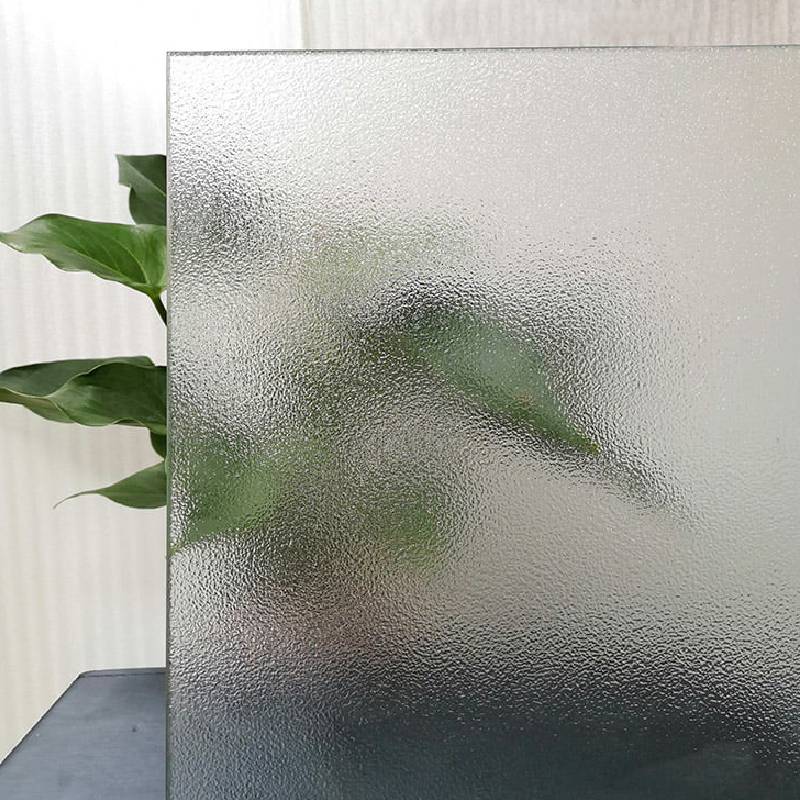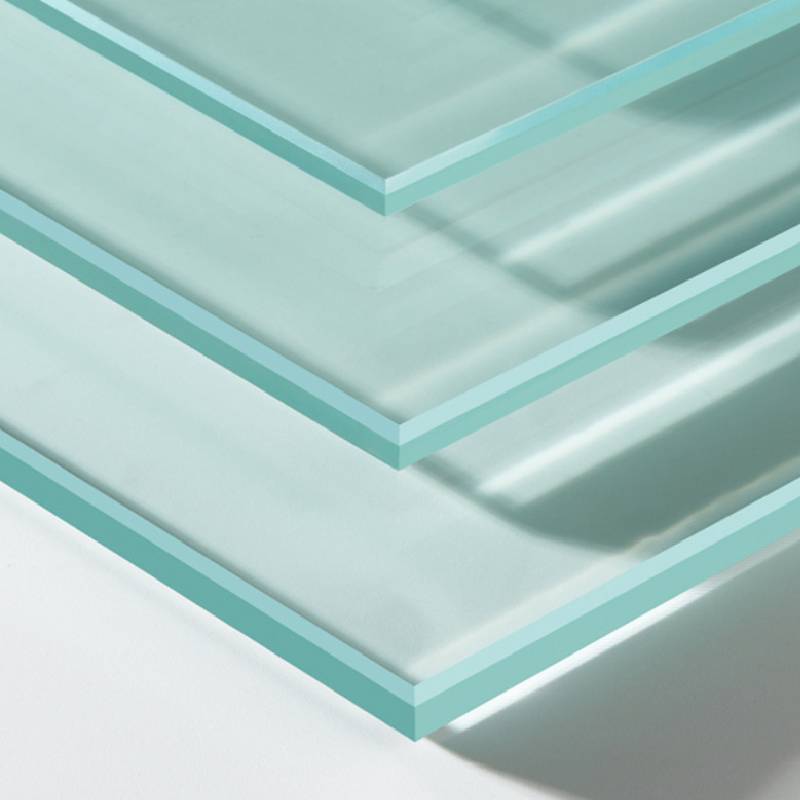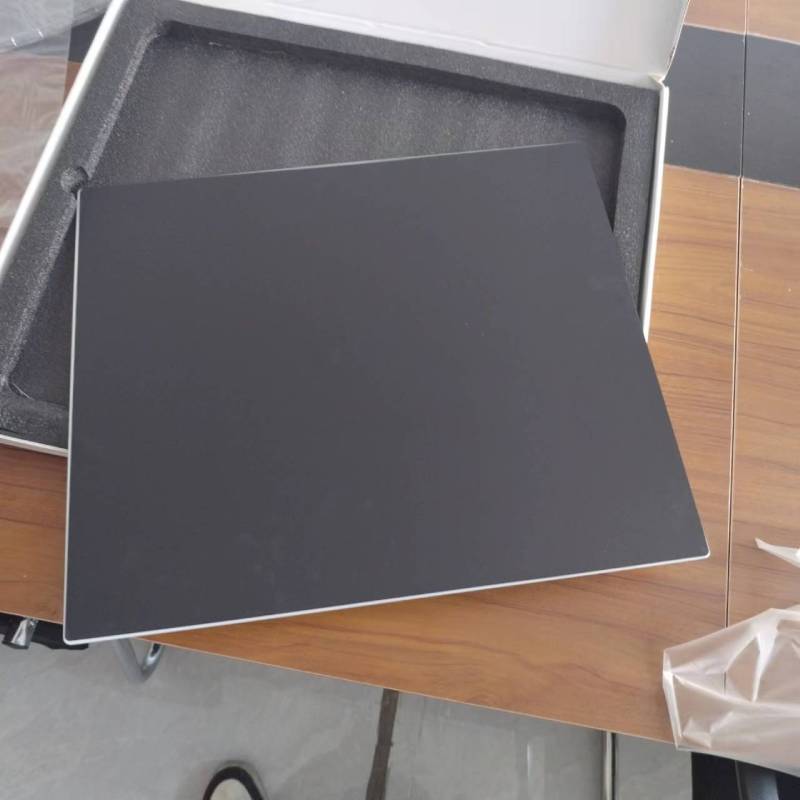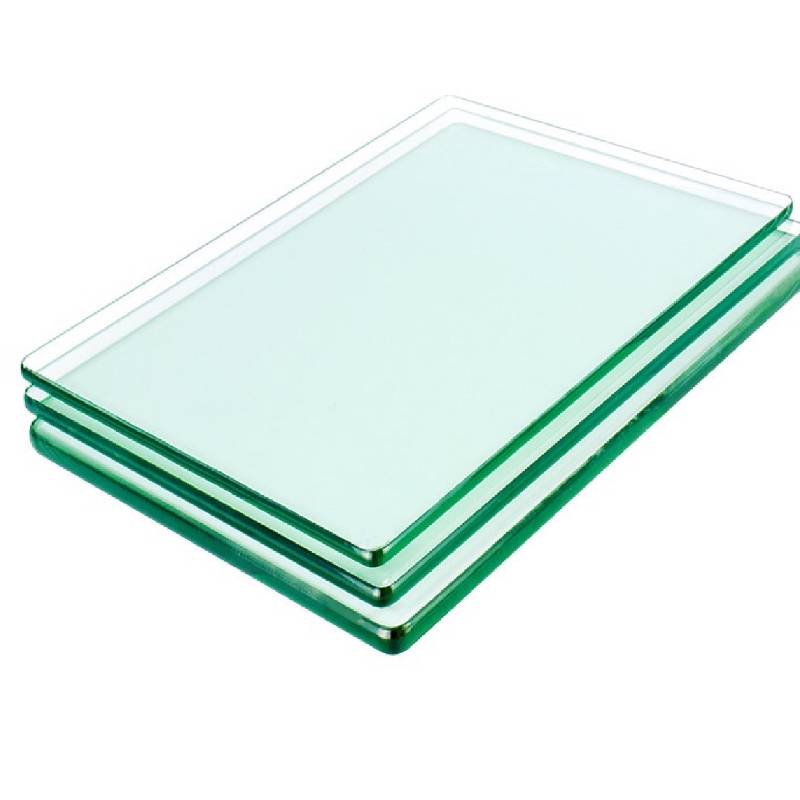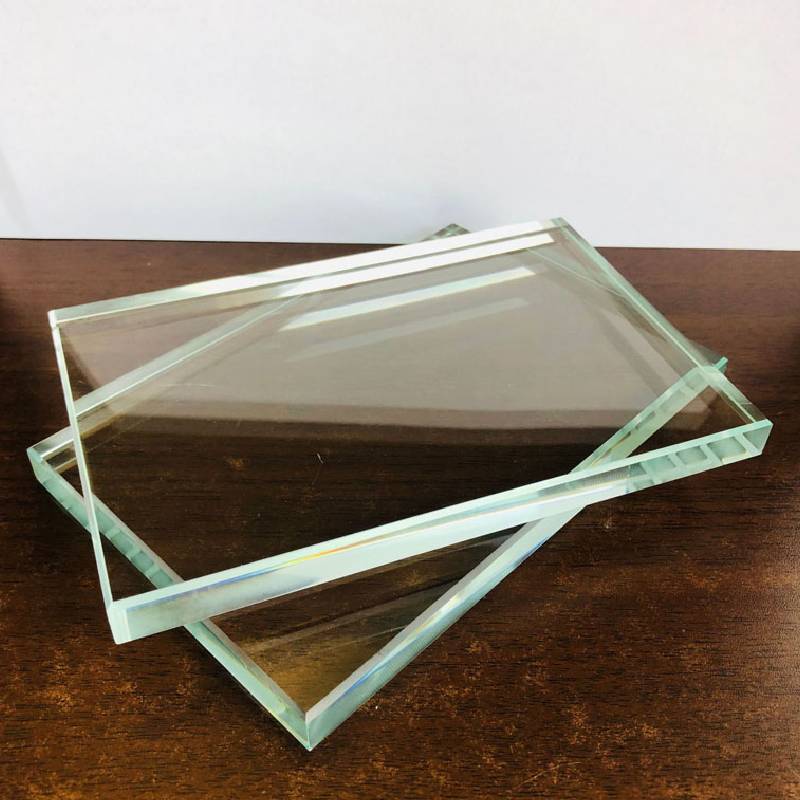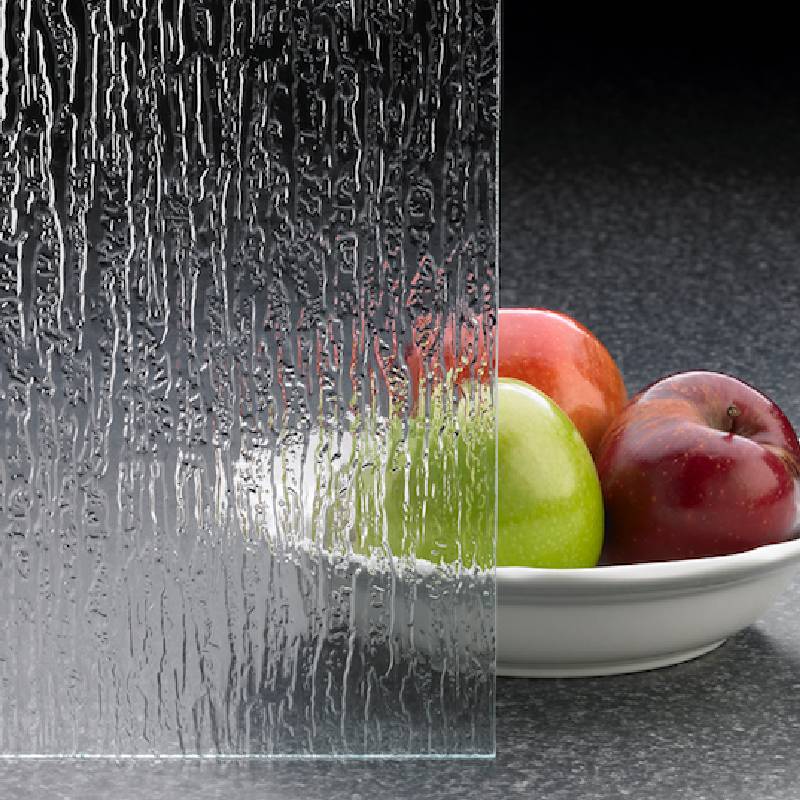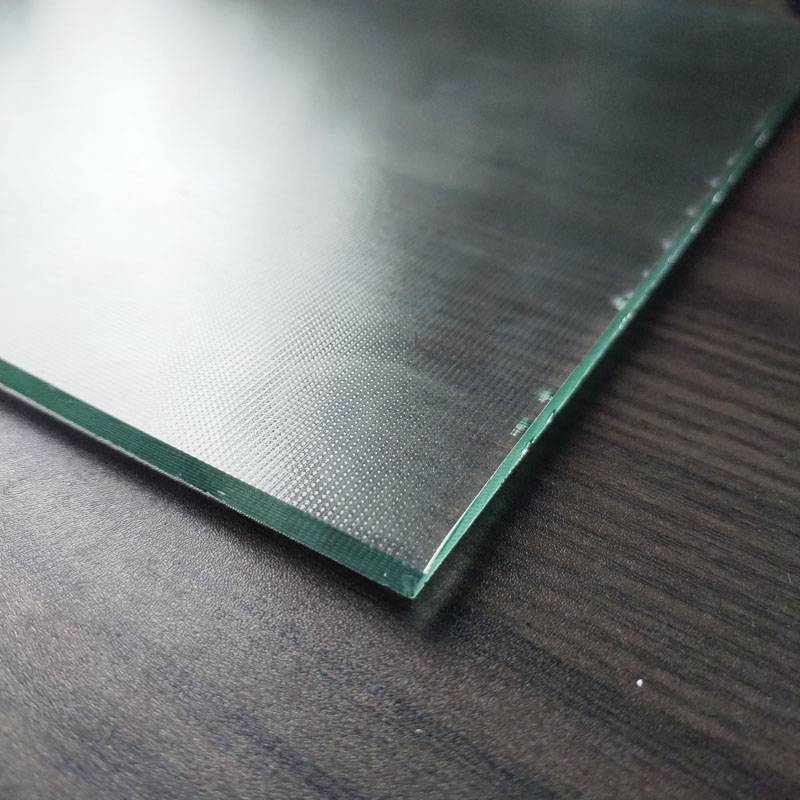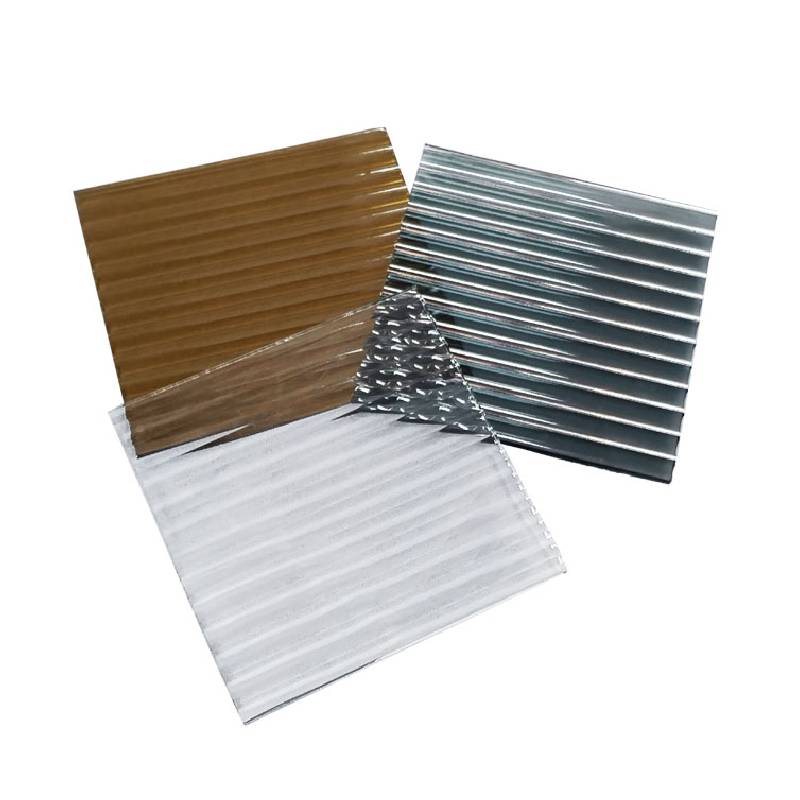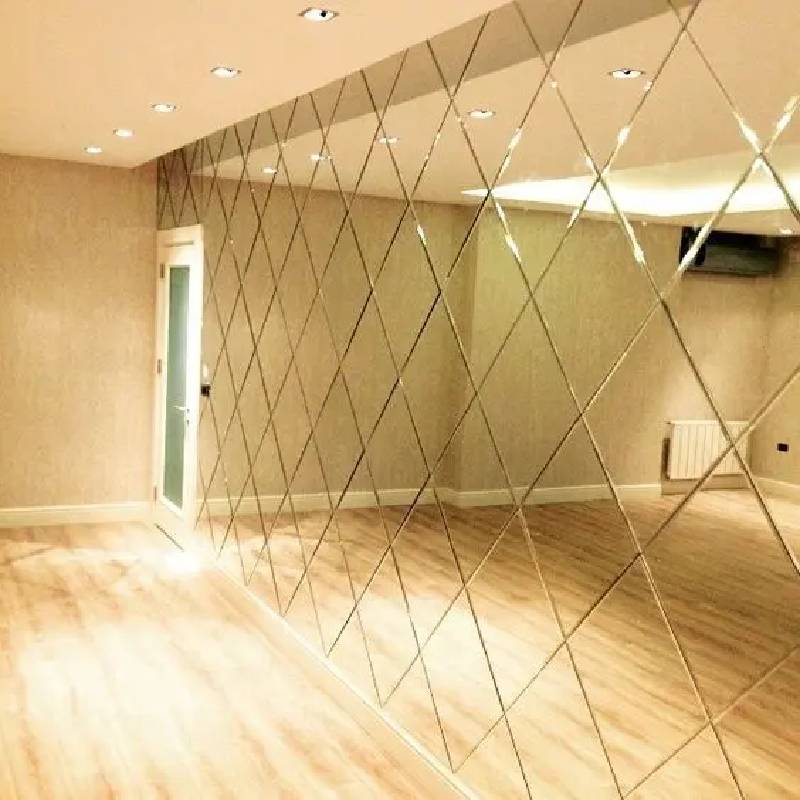Float glass means that the raw materials are melted at high temperature in the furnace. The molten glass continuously flows from the furnace and floats on the surface of the relatively dense tin liquid. Under the action of gravity and surface tension, the glass liquid spreads on the tin liquid surface. It is opened, flattened, and the upper and lower surfaces are formed to be smooth, hardened, and cooled before being led to the transition roller table. The rollers on the roller table rotate, pulling the glass ribbon out of the tin bath and into the annealing kiln. After annealing and cutting, flat glass products are obtained. The biggest feature of float glass is that its surface is hard, smooth, and flat. Especially when viewed from the side, the color is different from ordinary glass. It is white and the object is not distorted after reflection. In addition, due to the relatively good thickness uniformity, the transparency of its products is also relatively strong. It is precisely because of this transparency that it has a wider field of view. The broad field of view allows float glass to be used in many fields.
The production process of float glass is completed in a tin bath where protective gas (N2 and H2) is introduced. Molten glass continuously flows from the tank kiln and floats on the surface of the relatively dense tin liquid. Under the action of gravity and surface tension, the molten glass spreads and flattens on the tin liquid surface, forming an upper and lower surface that is smooth, hardened, and cooled. Then he was led to the transition roller table. The rollers on the roller table rotate, pulling the glass ribbon out of the tin bath and into the annealing kiln. After annealing and cutting, flat glass products are obtained. Compared with other forming methods, the advantages of float method are: it is suitable for high-efficiency manufacturing of high-quality flat glass, such as no corrugation, uniform thickness, smooth upper and lower surfaces, and parallel to each other; the scale of the production line is not limited by the forming method, and the energy per unit product Low consumption; high utilization rate of finished products; easy to scientifically manage and realize full-line mechanization and automation, high labor productivity; continuous operation cycle can last for several years, which is conducive to stable production; can provide suitable conditions for online production of some new varieties, such as Electric float reflective glass, spray film glass during annealing, cold end surface treatment, etc.
Float glass is widely used and is divided into tinted glass, float silver mirror, float white glass, etc. Among them, ultra-white float glass has a wide range of uses and broad market prospects. It is mainly used in the fields of high-end buildings, high-end glass processing and solar photovoltaic curtain walls, as well as high-end glass furniture, decorative glass, imitation crystal products, lighting glass, precision electronics industries, Special buildings, etc. Float glass has relatively good thickness uniformity and relatively strong transparency. Therefore, after tin surface treatment, it is relatively smooth. Under the action of smoothing, flame and polishing, it forms a surface that is relatively neat and flat. Glass with better strength and stronger optical properties. This kind of float glass has the characteristics of good transparency, brightness, purity, and bright indoor light. It is also the best choice for building doors, windows, and natural lighting materials. It is also one of the most widely used building materials. one.
The history of float glass can be traced back to the late 1950s. The British Pilkington Glass Company announced to the world that it had successfully developed the float forming process for flat glass. This was a revolution in the original grooved top forming process. However, the Western technology blockade at that time made China's float glass development and production have to take the path of self-reliance and independent innovation. In May 1971, the former Ministry of Building Materials Industry decided to conduct float process industrial trials in Luobo. Glass experts from all over the country gathered in Luobo, and more than a thousand employees of Luobo participated in the war. On September 23, 1971, under the guidance of department leaders and relevant experts, and with the full cooperation of fraternal units, the cadres and workers of Luoyang University worked together for more than three months and finally successfully built the first float. The glass production line produced my country's first float glass. From 1971 to 1981, CLFG implemented large-scale technical transformation on this line three times. The melting capacity of the production line reached 225 tons, the plate width exceeded 2 meters, and the overall yield reached 76.96%. At the end of 1978, In early 1979, thinner 4 mm glass was stably produced. The technology and equipment of "Luoyang Float Glass Process" were also improved day by day, and the technical level was continuously improved.
Ko nga painga o te karaehe rewa te nuinga ka kitea i roto i nga ahuatanga e whai ake nei: tuatahi, he pai te papatahi me te kore he ripples wai; tuarua, he pai nga rauemi mata o te kirikiri kiripaka kua tohua; tuatoru, he parakore te karaehe i mahia, he pai te maramatanga; ka mutu, ko te hanganga Kiato, taumaha, maeneene ki te pa, he taumaha atu i te pereti papatahi mo ia mita tapawha he rite te matotoru, he ngawari ki te tapahi me te kore e ngawari ki te pakaru. Ko enei painga ka nui te whakamahi i te karaihe rererangi i roto i te hanga, motuka, whakapaipai, taonga, hangarau hangarau korero me etahi atu ahumahi.
- Te matotoru o te karaihe maanu
Te matotoru auau 3mm, 4mm, 5.5mm, 6mm, 8mm, 10mm, 12mm
He tino kikokore 1.2mm, 1.3mm, 1.5mm, 1.8mm, 2mm, 2.3mm, 2.5mm
Te matotoru 15mm, 19mm
Rahi 1220*1830mm, 915*2440mm, 915*1220mm, 1524*3300mm, 2140*3300mm, 2140*3660mm, 2250*3300mm, 2440*3660mm
 Awherika
Awherika  Albanian
Albanian  Amharic
Amharic  Arapi
Arapi  Arameni
Arameni  Azerbaijani
Azerbaijani  Basque
Basque  Belarusian
Belarusian  Bengali
Bengali  Bosnia
Bosnia  Bulgarian
Bulgarian  Katarana
Katarana  Cebuano
Cebuano  Korihika
Korihika  Koroatiana
Koroatiana  Czech
Czech  Teniana
Teniana  Tatimana
Tatimana  Ingarihi
Ingarihi  Esperanto
Esperanto  Estonian
Estonian  Finnish
Finnish  Wīwī
Wīwī  Frisian
Frisian  Kariri
Kariri  Georgian
Georgian  Tiamana
Tiamana  Kariki
Kariki  Gujarati
Gujarati  Haiti Creole
Haiti Creole  hausa
hausa  hawaii
hawaii  Hiperu
Hiperu  Kao
Kao  Miao
Miao  Hungarian
Hungarian  Tiorangi
Tiorangi  igbo
igbo  Initonia
Initonia  Irish
Irish  Itari
Itari  Hapanihi
Hapanihi  Hawaana
Hawaana  Kannada
Kannada  Kazakh
Kazakh  Khmer
Khmer  Rwandan
Rwandan  Koreana
Koreana  Kurdish
Kurdish  Kyrgyz
Kyrgyz  TB
TB  Latina
Latina  Latvian
Latvian  Lithuanian
Lithuanian  Luxembourgish
Luxembourgish  Makeronia
Makeronia  Malgashi
Malgashi  Malay
Malay  Malayalam
Malayalam  Marite
Marite  Maori
Maori  Mareti
Mareti  Mongolian
Mongolian  Myanmar
Myanmar  Nepali
Nepali  Norewai
Norewai  Norewai
Norewai  Occitan
Occitan  Pashto
Pashto  Pahia
Pahia  Porohia
Porohia  Potiti
Potiti  Punjabi
Punjabi  Romanian
Romanian  Ruhia
Ruhia  Hamoa
Hamoa  Scottish Gaelic
Scottish Gaelic  Serbian
Serbian  Ingarihi
Ingarihi  Shona
Shona  Sindhi
Sindhi  Sinhala
Sinhala  Slovak
Slovak  Slovenian
Slovenian  Somali
Somali  Paniora
Paniora  Hatana
Hatana  Swahili
Swahili  Huitene
Huitene  Tagalog
Tagalog  Tajik
Tajik  Tamil
Tamil  Tatara
Tatara  Telugu
Telugu  Thai
Thai  Turiki
Turiki  Turkmen
Turkmen  Iukereiniana
Iukereiniana  Urdu
Urdu  Uighur
Uighur  Uzbek
Uzbek  Vietnamese
Vietnamese  Welsh
Welsh  Awhina
Awhina  Yiddish
Yiddish  Yoruba
Yoruba  Zulu
Zulu 

